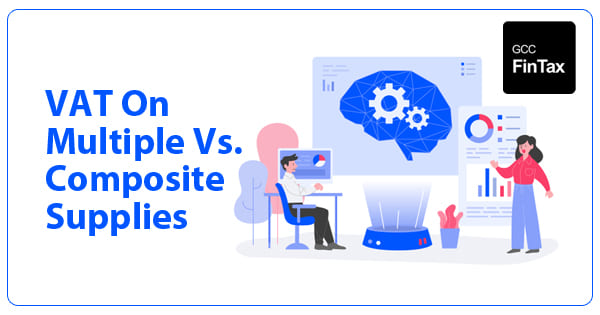
Many supplies of goods and services made consist of several elements combined in a single transaction. Where such supplies occur, it is necessary for the supplier to determine whether they are making two (or more) ‘multiple’ supplies or a single ‘composite’ supply combining all elements.
Where a multiple supply is made, the supplier is required to treat each element separately for VAT purposes, meaning each is subject to its own place of supply, time of supply and VAT rate rules. Where a composite supply is made, all elements that make up the supply are subject to the same VAT treatment. This can cause issues for businesses making supplies of more than one component, where the underlying components would differ in VAT treatment if supplied individually.
How do I determine whether my supply is multiple or composite?
The law around multiple/composite supplies is covered in Article 4 of the UAE VAT Executive Regulations, which provides that a ‘composite’ supply will occur where either;
Furthermore, the law provides that, in order for a composite supply analysis to apply, the price of each individual component must not be separately identified and all elements must be provided by the same supplier.
Therefore, when analysing a supply consisting of several components, a business should seek to determine whether the supply has a ‘principal component’, i.e. the main element being sought by the customer to which other parts are ancillary; or whether it would be impossible or unnatural to split out the various elements of a supply. In these cases, the VAT analysis applicable to the principal component or overarching aim would apply to all elements of the supply. Conversely, if the individual components of the supply have separate identifiable value and could be seen as distinct aims sought by the purchaser, each would need to be considered separately for VAT purposes.
The FTA has provided further guidance on this issue in the Insurance VAT Guide (VATGIN1), including certain information on the FTA’s interpretation of the law that is not present in published legislation:
How might this occur in practice?
The distinction between multiple and composite supplies is often difficult to make and will turn on the facts of an individual case. For example, consider the case of an airline selling a customer an international business class ticket, including lounge access. Here, the principal component of the supply is clearly the international travel sought by the customer, which is subject to 0% VAT. The lounge access is merely a means of better enjoying the principal supply of air travel – it is not something that the customer would purchase without the transportation service. Furthermore, the cost of the lounge access, while it might be factored into the ticket price overall, would not be separately disclosed to the customer. Therefore, in this case the whole transaction would likely be subject to 0% VAT as an international transportation service
However, if the customer purchased an economy class ticket, where no lounge access was normally included and was offered the chance to purchase entry to the lounge at a discounted rate, the VAT treatment may differ. In this case, the lounge access has a clear, identifiable, value separate from the international travel component. As the customer is paying an additional amount to access the lounge, this could be considered ‘an aim in itself’. Therefore, even if the air ticket and lounge access were charged to the customer at the same time, it is likely that a multiple supply analysis would apply and the lounge access element of the charge could be subject to 5% VAT.
What now?
As this example illustrates, two very similar scenarios, both involving a passenger taking an international flight with lounge access, can have very different VAT treatments depending on the contractual structure and specific facts of the case.
Furthermore, as the UAE VAT regime develops over the next few years, we could see an increase in VAT rates for selected luxury items, which would make the single versus multiple supply question even more relevant for many businesses.
Failure to properly identify composite and multiple supplies is currently an area of frequent challenge by the FTA and can result in significant penalties where errors in classification are made. As these cases are highly fact specific, there are often differences of interpretation between the FTA and taxpayers, making early identification and analysis of risky transactions key to mitigate the risk of errors.
Disclaimer: Content posted is for informational & knowledge sharing purposes only, and is not intended to be a substitute for professional advice related to tax, finance or accounting. The view/interpretation of the publisher is based on the available Law, guidelines and information. Each reader should take due professional care before you act after reading the contents of that article/post. No warranty whatsoever is made that any of the articles are accurate and is not intended to provide, and should not be relied on for tax or accounting advice.
You can access Law including Guidelines, Cabinet & FTA Decisions, Public Clarifications, Forms, Business Bulletins for all taxes (Vat, Excise, Customs, Corporate Tax, Transfer Pricing) for all GCC Countries in the Law Section of GCC FinTax